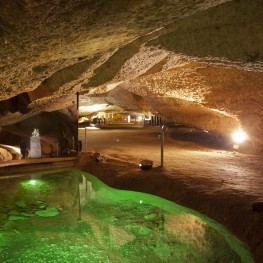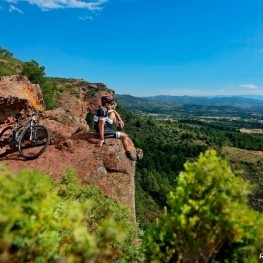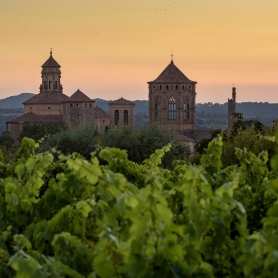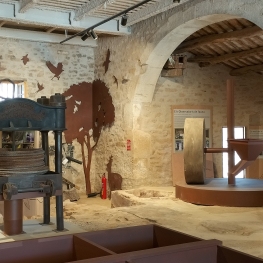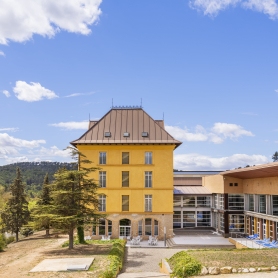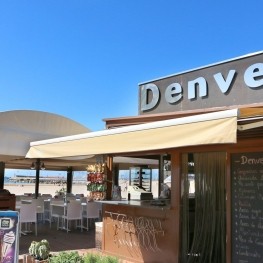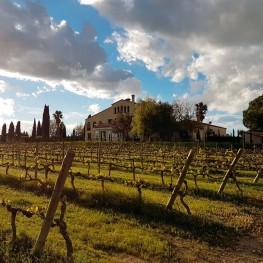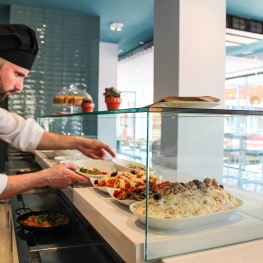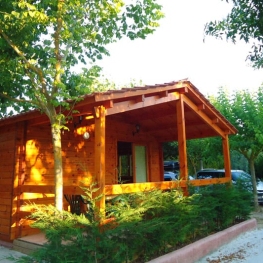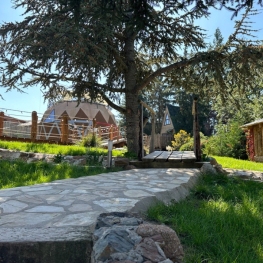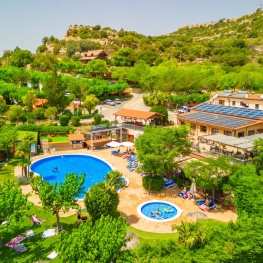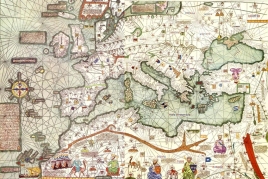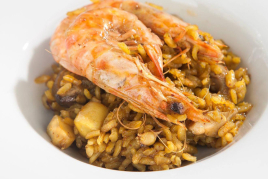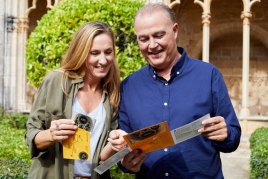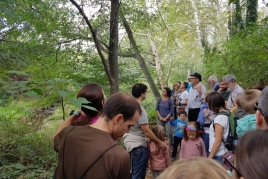Route through Prades: nature, heritage, and charming villages
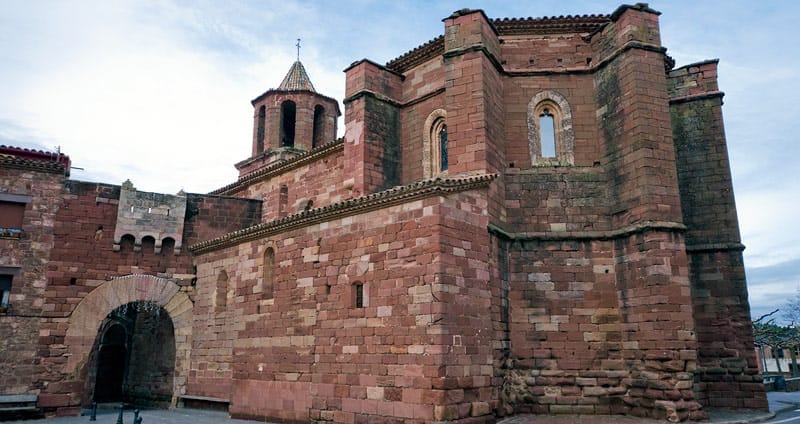
A flat town nestled between the mountains from which it gives its name. Flat and reddish, due to the color of the ashlars of its main buildings and many of the houses. Its location makes it an ideal starting point for excursions. But it's also worth exploring the heart of this medieval town, with its remains of walls and a castle. This is Prades, in Baix Camp.
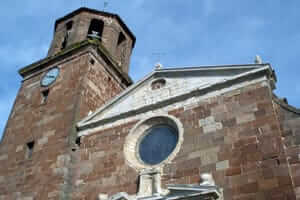 Located 950 meters above sea level, if you go in winter you might even be able to walk on snow, and if you go in summer you're sure to stay cool in the shade. What you certainly won't miss, summer or winter, are the curves to get there, whether via the T-700, T-701, or T-704. It's a small price to pay to find yourself in this place, which we could define as idyllic, surrounded by mountains. The town is undoubtedly a unique, charming place, and it's no wonder its historic site was declared a Site of Cultural Interest in 1993. So take some time to explore its streets, enjoy the tranquility within the walls and the reddish hue of many of the buildings. If it's market day, take the opportunity to mingle with the people and consider, even for a moment, that stalls have been set up in this very place since at least 1200!
Located 950 meters above sea level, if you go in winter you might even be able to walk on snow, and if you go in summer you're sure to stay cool in the shade. What you certainly won't miss, summer or winter, are the curves to get there, whether via the T-700, T-701, or T-704. It's a small price to pay to find yourself in this place, which we could define as idyllic, surrounded by mountains. The town is undoubtedly a unique, charming place, and it's no wonder its historic site was declared a Site of Cultural Interest in 1993. So take some time to explore its streets, enjoy the tranquility within the walls and the reddish hue of many of the buildings. If it's market day, take the opportunity to mingle with the people and consider, even for a moment, that stalls have been set up in this very place since at least 1200!
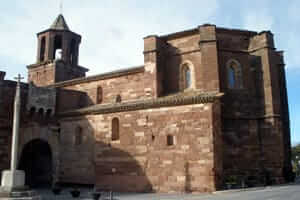 Prades is always at a crossroads, hence its birth and growth, and the importance of the market, practically from the moment it was reconquered from the Saracens by the Count of Barcelona , Ramon Berenguer IV, in the mid-12th century. We suggest an itinerary to help you discover the most interesting part, starting at the boundary cross at the back of the church, right in front of one of the gates that allowed access to the interior of the town. The cross has welcomed visitors since the 13th century, and already at this point, the red color we mentioned before becomes clear, especially on the walls of the church. This color is due to the hue of the sharp stone that surrounds a good part of the town—and which, of course, was used to build the buildings. If we look to the left, we'll also see a section of the wall that remains standing. We'll see more later.
Prades is always at a crossroads, hence its birth and growth, and the importance of the market, practically from the moment it was reconquered from the Saracens by the Count of Barcelona , Ramon Berenguer IV, in the mid-12th century. We suggest an itinerary to help you discover the most interesting part, starting at the boundary cross at the back of the church, right in front of one of the gates that allowed access to the interior of the town. The cross has welcomed visitors since the 13th century, and already at this point, the red color we mentioned before becomes clear, especially on the walls of the church. This color is due to the hue of the sharp stone that surrounds a good part of the town—and which, of course, was used to build the buildings. If we look to the left, we'll also see a section of the wall that remains standing. We'll see more later.
A Renaissance fountain
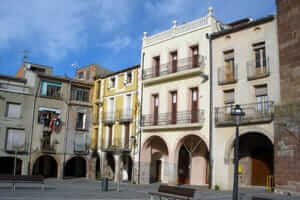 Crossing the gate, we find ourselves in one of the most important and emblematic spots in Prades, if not the most. The Plaza Mayor is of great beauty, with buildings of different colors and periods, all in harmony, and with the porches as a common denominator. We have already noted that this is where the market is held on Saturdays, and in addition to being the commercial center, it is also the political center, as we also find the Casa de la Villa, and the religious center, with the façade of the Church of Santa María presiding over the space. Despite suffering damage during the Civil War, the church is quite striking, not only because of its reddish color, but also because the façade has Renaissance elements, not very common in our country, although the whole should be considered a transition between Romanesque and Gothic styles.
Crossing the gate, we find ourselves in one of the most important and emblematic spots in Prades, if not the most. The Plaza Mayor is of great beauty, with buildings of different colors and periods, all in harmony, and with the porches as a common denominator. We have already noted that this is where the market is held on Saturdays, and in addition to being the commercial center, it is also the political center, as we also find the Casa de la Villa, and the religious center, with the façade of the Church of Santa María presiding over the space. Despite suffering damage during the Civil War, the church is quite striking, not only because of its reddish color, but also because the façade has Renaissance elements, not very common in our country, although the whole should be considered a transition between Romanesque and Gothic styles.
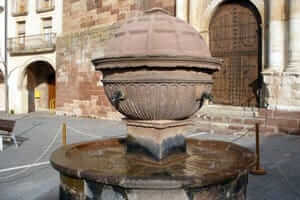 Now we can focus on one element of this square that we'd most like to see, if only for its uniqueness, and that is none other than the fountain. A Renaissance-era fountain shaped like a globe, with four jets, one for each cardinal point. It's a symbol of the city, and they say that one night a year, in the month of July, instead of water gushing out of it, it actually flows from a cave!
Now we can focus on one element of this square that we'd most like to see, if only for its uniqueness, and that is none other than the fountain. A Renaissance-era fountain shaped like a globe, with four jets, one for each cardinal point. It's a symbol of the city, and they say that one night a year, in the month of July, instead of water gushing out of it, it actually flows from a cave!
The castle of the Counts of Prades (or what remains of it)
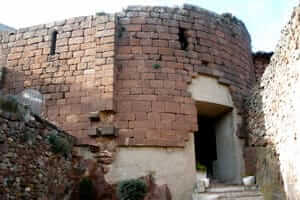 Of the various streets leading off the square, we take Calle Mayor, with a few bars, restaurants, and shops, and soon we come to Plaza de la Pau, also known, as a sign indicates, as Plaza del Huevo or Plaza de los Ajos. This is one of the few squares in the old town of Prades, apart from Calle Mayor, and here we can see that many houses, even those not very old, are made of red stone. Returning to Calle Mayor, a little further on, on the left, there is a street with a gateway in the middle, called Ponos, very different from what we found at the beginning of the route, for example, next to the boundary cross. In this case, it is a small Gothic gateway, built to open a new passage in the wall, when it had practically ceased to be used for defense.
Of the various streets leading off the square, we take Calle Mayor, with a few bars, restaurants, and shops, and soon we come to Plaza de la Pau, also known, as a sign indicates, as Plaza del Huevo or Plaza de los Ajos. This is one of the few squares in the old town of Prades, apart from Calle Mayor, and here we can see that many houses, even those not very old, are made of red stone. Returning to Calle Mayor, a little further on, on the left, there is a street with a gateway in the middle, called Ponos, very different from what we found at the beginning of the route, for example, next to the boundary cross. In this case, it is a small Gothic gateway, built to open a new passage in the wall, when it had practically ceased to be used for defense.
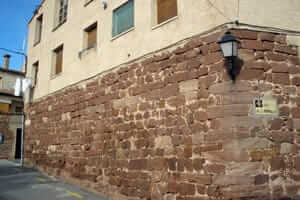 The houses also "took advantage" of this "end of the wall" phase, as we saw when we reached the end of Calle Mayor: the walls of some houses lean against the wall, or the wall itself is part of the structure. You can see some rather unusual houses, with one part in the red color of the Prades stone, and a much newer and taller part made of very different materials.
The houses also "took advantage" of this "end of the wall" phase, as we saw when we reached the end of Calle Mayor: the walls of some houses lean against the wall, or the wall itself is part of the structure. You can see some rather unusual houses, with one part in the red color of the Prades stone, and a much newer and taller part made of very different materials.
Let's look for Calle de la Costa del Castillo, with a gentle slope and very old and semi-detached houses. We find the castle, which was the seat of the Counts of Prades, along with the fortified church of San Miguel. Unfortunately, not much remains of either of them, and there is even relatively little information about their history and what they must have been like originally. It is thought that they were built around the 12th century, and that by the mid-16th century they were already in quite poor condition. Conflicts such as the Reapers' War, and the subsequent construction of corrals and dwellings by local residents, finally condemned this heritage. The church was somewhat less damaged and preserves an apse with a ruined vault, a section of the nave, and an old side chapel.
The Planet of the Bridge
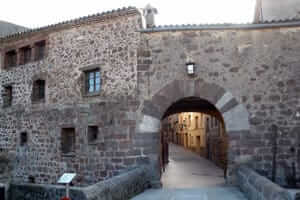 After walking down Calle de la Costa del Castillo, we can turn right onto Passage del Castillo and reach the small, secluded Plaza de los Infantes, where the former Casa de la Villa (City Hall) is located. Today, it houses several services, such as a library, a nursing home, a doctor's office, and a telecenter. Via Calle Nueva del Puente, we head straight toward the so-called Planet del Pont (Planet of the Bridge), one of the northern exits (or entrances) to the town. It is believed that the walls (built between the 14th and 15th centuries) initially consisted of four gateways, and one we see now in front of us bears the name of a bridge because it spans the Fuente de Grau ravine. The gateway leads past the Casa de Cal Pinyons (House of Cal Pinyons), a dwelling that is a veritable open-air museum of antique farm tools hanging from its walls. Next to it is the oldest preserved house in Prades, dating from the 13th century.
After walking down Calle de la Costa del Castillo, we can turn right onto Passage del Castillo and reach the small, secluded Plaza de los Infantes, where the former Casa de la Villa (City Hall) is located. Today, it houses several services, such as a library, a nursing home, a doctor's office, and a telecenter. Via Calle Nueva del Puente, we head straight toward the so-called Planet del Pont (Planet of the Bridge), one of the northern exits (or entrances) to the town. It is believed that the walls (built between the 14th and 15th centuries) initially consisted of four gateways, and one we see now in front of us bears the name of a bridge because it spans the Fuente de Grau ravine. The gateway leads past the Casa de Cal Pinyons (House of Cal Pinyons), a dwelling that is a veritable open-air museum of antique farm tools hanging from its walls. Next to it is the oldest preserved house in Prades, dating from the 13th century.
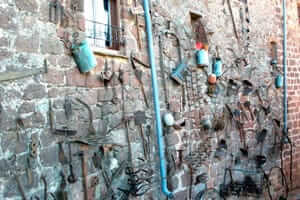 Beyond the gate, we get the (real) feeling that the old town has disappeared, and that fields and crops are taking over the territory. So, after observing the fragments of the wall that have survived to this day, we cross Planet del Pont in the opposite direction and head down Calle de San Antonio, which ends at the Plaza Mayor, right next to where we started.
Beyond the gate, we get the (real) feeling that the old town has disappeared, and that fields and crops are taking over the territory. So, after observing the fragments of the wall that have survived to this day, we cross Planet del Pont in the opposite direction and head down Calle de San Antonio, which ends at the Plaza Mayor, right next to where we started.
The patron saint of beekeepers
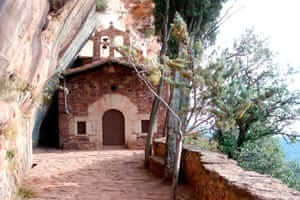 If you have a little time left, we suggest a worthwhile visit, within the same area of Prades and about two kilometers from the historic center we just saw. We are referring to the hermitage of the Virgen de la Abellera, which we reach by taking the T-704 road towards La Febró or Alcover. On the left, a sign indicates the way to get there. You can also walk from Prades, in this case along the Camino Viejo de la Abellera. This route will also allow you to visit the hermitages of San Antonio and San Roque. As for Abellera, it is a construction from 1570 literally embedded in the cliff, taking advantage of a natural cave. Thus, the man-made part, the hermitage, is interesting, as is the one created by nature, the cave, and the reddish earth of the place. And without a doubt, the panoramic views over the Brugent River valley and the Alt Camp plain are also interesting.
If you have a little time left, we suggest a worthwhile visit, within the same area of Prades and about two kilometers from the historic center we just saw. We are referring to the hermitage of the Virgen de la Abellera, which we reach by taking the T-704 road towards La Febró or Alcover. On the left, a sign indicates the way to get there. You can also walk from Prades, in this case along the Camino Viejo de la Abellera. This route will also allow you to visit the hermitages of San Antonio and San Roque. As for Abellera, it is a construction from 1570 literally embedded in the cliff, taking advantage of a natural cave. Thus, the man-made part, the hermitage, is interesting, as is the one created by nature, the cave, and the reddish earth of the place. And without a doubt, the panoramic views over the Brugent River valley and the Alt Camp plain are also interesting.
Inside the chapel, the statue of the Virgin —a 1940 copy of her predecessor—bears the name of the Abellera and is considered the patron saint of Catalan beekeepers. Her crown, which she doesn't always wear, is a beautiful piece with fifty silver bees with their queen and the Prades coat of arms.
A good place to end this route and get to know, at least a little, not only medieval Prades but also the surrounding mountains , the Prades Mountains. However, if you still have a little time left, we can make a couple more getaways.
The Monastery of Poblet and the Espluga de Francolí
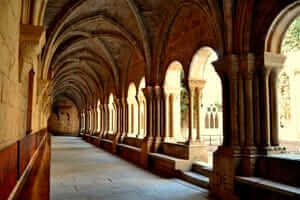 If you still have time and energy left, we suggest visiting the Poblet Monastery, on the Cistercian Route, just 30 minutes from Prades. This monastery was built at the foot of the Prades Mountains in the early 12th century and remains alive despite the passage of time to this day. Thanks to its majesty, the persistence of its Cistercian monks who have lived there since its founding, and its role as the religious seat of the Catalan-Aragonese crown, it has been highly recognized on numerous occasions.
If you still have time and energy left, we suggest visiting the Poblet Monastery, on the Cistercian Route, just 30 minutes from Prades. This monastery was built at the foot of the Prades Mountains in the early 12th century and remains alive despite the passage of time to this day. Thanks to its majesty, the persistence of its Cistercian monks who have lived there since its founding, and its role as the religious seat of the Catalan-Aragonese crown, it has been highly recognized on numerous occasions.
Another excursion we can take, also just 30 minutes away, is to visit Espluga de Francolí, to discover its charms, such as the Modernist Winery (La Catedral del Vino), the Museum of Rural Life, or, for the more adventurous, the Espluga Caves.
You may also be interested in: Guided tours of the towns and cities of Catalonia | Know the religious heritage
What to do
Coves de l'Espluga de Francolí
L'Espluga de FrancolíThe Espluga de Francolí Caves are a gateway to our country's geological…
Muntanyes de la Costa Daurada
The municipalities of the Costa Daurada Mountains make up a territory of…
Espai Maldanell
Vallbona de les Monges (a 14.1 Km)Located in what was the first mill of the Vallbona farmers' cooperative…
Where to eat
Iberik Rocallaura Balneari
Vallbona de les Monges (a 12.7 Km)Iberik Rocallaura Balneari is located on the Cistercian Route, in the municipality…
Restaurant Denver Cambrils
Cambrils (a 27.8 Km)From the legendary Xiri to the current restaurant, Denver offers a creative…
L'Orangerie de Clos Barenys
Vila-seca (a 26.5 Km)Under our fires, we prepare haute Mediterranean cuisine by selecting the finest…
Arena Tapas Restaurant
Salou (a 28.8 Km)Enjoy an innovative cuisine, with high-quality local products of proximity, with an…
Where to sleep
Hotel rural - Xalet de Prades
PradesImmerse yourself in the nature of the Sierra de Montsant Natural Park…
Càmping Capfun Serra de Prades
Vilanova de Prades (a 5 Km)In the heart of nature, the Prades campsite is located in Vilanova…
Iberik Rocallaura Balneari
Vallbona de les Monges (a 12.7 Km)Iberik Rocallaura Balneari is located on the Cistercian Route, in the municipality…


